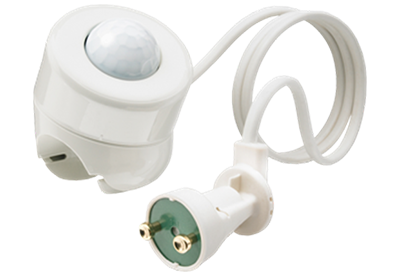Philips Lighting, a new generation of smart TLD starters bringing energy saving and green technologies to the industry. The project dealt with development and industrialization of a new, innovative, yet cost-effective retrofit device, which incorporated the functions of a regular TLD starter, extended with local intelligence. The local intelligence relied on sensors installed on the device, such as presence detection sensor and daylight sensor.
Key achievements:
- Full mechanical, HW and SW development, certification and release to manufacture
- Robust and reliable system covering all market present T8 fluorescent lamp types for electromagnetic ballasts with standard dimensions, 32 W – 58 W, single, inductive and capacitive, all commonly used brands: Philips, Sylvania, Osram, GE

Project Overview
The goal of the project is a development of new genera- tion of TLD starters targeting energy saving.
The project deals with development and industrializa- tion of a new, innovative, but yet cost-effective device, which incorporates the functions of a regular TLD start- er, extended with local intelligence. The local intelli- gence relies on the sensors installed on the device, like presence detection sensor or daylight sensor.
The main challenges of the project were:
- Complete product development (from feasibil- ity study to industrialization), including electronic and casing
- Low per-unit price
- High performance and reliability
The initial concept developed by the development cen- ter of the customer had several flaws: too high costs for successful market entry and unreliable operation in some configurations.
The project started as feasibility study aiming to find a new approach providing more cost-effective solution. The feasibility study showed that RT-RK is able to de- velop such device with significantly lower price than the initial design, while the performances are same or better.
As a next step, a product development project was ini- tiated, targeting development of the production ready design. The estimated production quantity was 100k+ per year.
The developed device is able to ignite and cut down a fluorescent tube operating on conventional electromagnetic gear, depending on the sensor readings. It consists of three main components: switching element, micro controller and sensing element. The switching element is chosen to withstand the power and durability requirements. The micro controller is responsible for sensor reading, control logic and for lamp ignition and extinguishing procedures. Depending on the sensor chosen, various applications are possible.
The complete electronic is enclosed by a plastic housing. Main design is provided by the customer, while the final drawings, models and simulation were done by RT-RK. According to the drawings, tools for molding and plastic injection were produced and successfully verified. The complete unit is industrialized, in terms of manufacturability and mass production aspects (component toler-ances, test points for post-production verification, etc.)
The design of the new is retrofit, so it can be used as a replacement for conventional starters in existing fluorescent luminary installation, in a plug-and-play fashion.
During the development, the appropriate IEC standards were considered and satisfied. The durability, stability and safety requirements were taken into account during device design and component selection. The thermal dissipation of the electronic components was managed in order to ensure safe and robust operation in the plastic housing. The system was intensively tested with numerous lamp configurations, including capacitive and inductive gears (ballasts), lamps from different manufacturers of various power.

The development lasted one year. It involved a hardware engineer for schematics and PCB design, a mechanic engineer for modeling and design, one engineer for power and analog electronic design, an engineer for software development, two test engineers and a project manager.
Conclusion
The project covered the complete development from the product idea until the industrialized product, consisting of electronics and plastic housing. All development steps and production of pilot series were either conducted or organized by RT-RK, in correspondence with the customer. The final solution fulfills the customer requirements both in terms of price and performances. The complete development process and costs were transparent to the customer via regular meetings and appropriate reports.